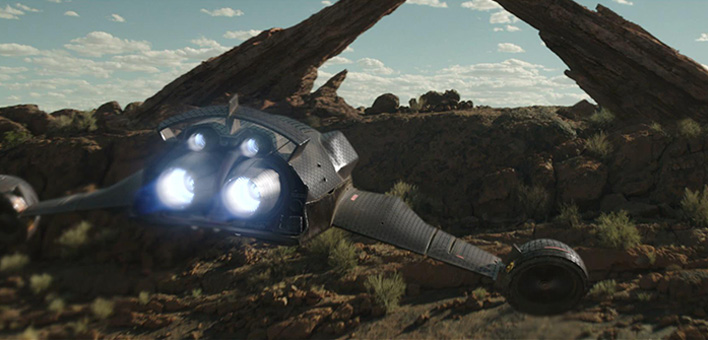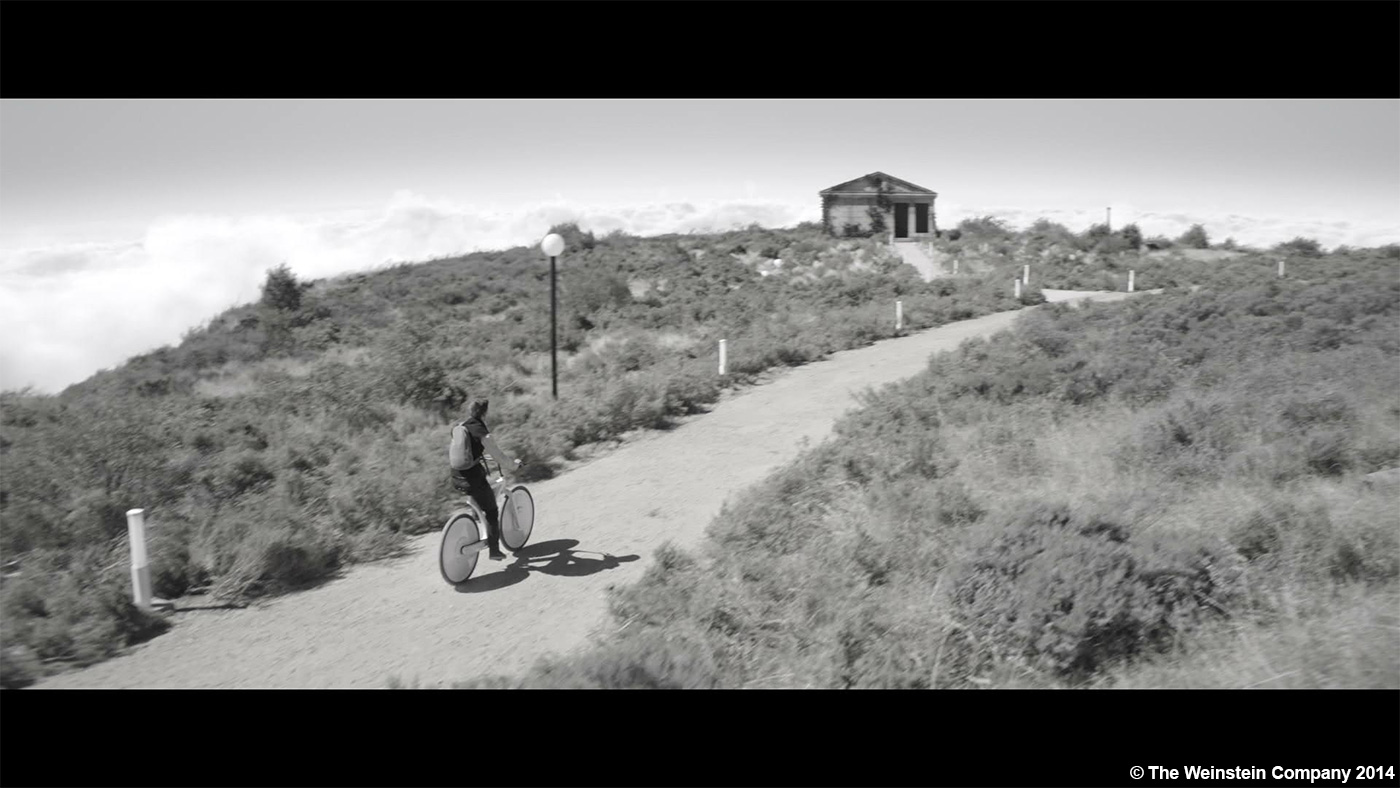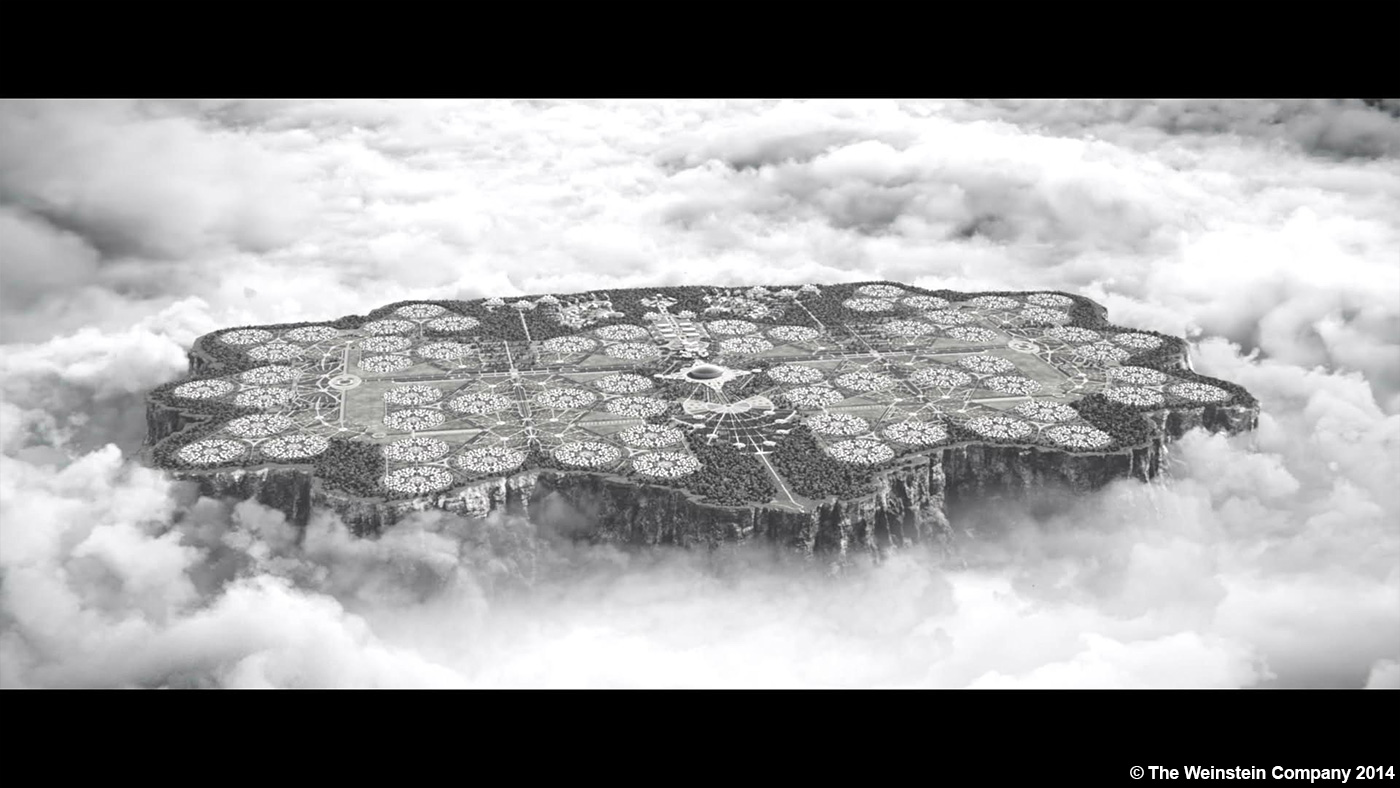Mark Breakspear explained to us the work of Method Studios for ELYSIUM on his last visit. Then he worked on ENDER’S GAME and THOR: THE DARK WORLD. Today he talks to us about his work on THE GIVER.
How did Method Studios and you get involved on this show?
I had previous worked with Robert Grasmere (the Production side VFX Supervisor and 2nd Unit Director) on SALT. Both Robert and I are good friends and have stayed in touch since SALT and so, when Philip called on Robert to be the supervisor / 2nd unit director on THE GIVER, Robert called on us to discuss the creative hurdles that the movie presented. When vfx producer Pablo Molles joined production shortly after, he formalized the process and had several companies bid the work.
How was the collaboration with director Phillip Noyce?
Philip is great to work with, the way he describes and isolates the visual style he wanted from the visual effects kept the process alive and energetic. Philip and I had regular calls every week of production, we would had previously uploaded our work, and we’d cineSync about the shots. The process was hugely collaborative, and it created a real sense of ownership amongst the artist to have the director giving feedback directly to them (in many cases they were in on the calls to hear notes directly from Philip).
It was an interesting time for all, having production come from the blistering speed of the shoot, to the initial slow build up of turnover, roto and match move assignments in VFX. Method was the primary vendor on the show, so the focus was on us from the start to deliver shots quickly for previews and trailers.
What was his approach about the visual effects?
Sameness. That became a key word to help explain how the community lived. Everyone had the same clothing for certain times of the day, or certain functions. Everyone lived in the same house, had the same bike, spoke the same way. Language was essentially reformatted to remove words like « love » or « hate » and everyone apologizes for the slightest thing, to which the programmed response would be « I accept your apology ». Philip used this in the design of the community, the look and layout of the architecture and the design of the gardens. Symmetry played a huge part in the design as well, literally dividing the community down a central spine with both halves a mirror of the other.
Philip wanted the space to feel and look logical, so that when we were filming in a practical location, the bigger wider vfx shots would all feel like it was an extension of that space. Some of our practical sets were pretty limiting in scope so balancing the randomness of a real location was trickier than first designed. Even though the locations had been made to follow the theme of « sameness » as much as possible, the real visual reality was that they were full of randomness and irregularity that didn’t conform to the ideas of conformity. We had to do quite a bit of digital set construction to extend the « sameness » feel throughout the locations.
Overall, Philip was a great collaborator with VFX, he and Robert Grasmere (the production side VFX supe) have worked together for many years and they have a second hand when it comes to talking about visual effects. Philip and Robert would have daily calls with us in post to talk about the previous day’s submissions and how they wanted to progress things along.
How did you work with Production VFX Supervisor Robert Grasmere?
Robert and I have been friends for quite a while now. He and I collaborated for the first time on SALT and it was a great experience which resulted in some great work. He’s a photographer at heart and that shows in the decisions he brings to the shots. He was also 2nd Unit Director on THE GIVER, so that meant I had even more rope to hang myself on 1st unit. It was great though as Robert and I have built that trust over the years and we know what Philip likes and when not to bring certain things up!
Can you describe one of your day on-set and then during the post?
South Africa is a great place to shoot. I was there almost 3 months and we travelled around quite a bit.
The biggest onset days we had were when we had to film Meryl Streep (who plays the Chief Elder) using motion control. Ms Streep’s schedule meant that she couldn’t be with us when we shot certain scenes, so it was decided fairly late in pre-production that she would become a « hologram » during those scenes that needed it. This meant motion control, and because the scene also involved huge crowds, it turned out to be a huge part of the VFX workload.
We shot the BG plates first using the moco rig from General Lift. We shot hundreds of plates using the pre designed camera moves that we had done at The Embassy VFX and Method Studios in Vancouver. We had built accurate previz for the moco moves and that translated in to passes for us to shoot on the day. We followed that up with a green screen moco shoot with Ms Streep.
In post the turnover was quick and the big shots made available early on which was great. Post moved along at the predictable pace, with previews and trailers worked in along the way. VFX Producer Christopher Anderson and Digital Production Manager Laurel Montgomery ran the show logistics day to day, while CG Supervisor Anthony Zwartouw and 2D Supervisor John Cairns ran the creative teams.
How did you approach The Community environment?
From behind… Literally… It was always the « thing » that lacked a defined concept and we discovered the approach as we shot the movie. It had to be that way, it was a real puzzle and the missing pieces would only be found as we shot in the different locations so we would know what the whole place would look like and how it could work together.
Can you explain in details about its design and its creation?
Initial art department concepts served as temporary designs until we finished shooting. Initial CG designs were based on these for temps, but we had to literally throw the design away when production closed in on a final design.
We initially did layouts in Illustrator and then took those designs and used the layers to generate the locations for foliage, buildings, roads, lights etc. It was a great way to keep the design alive and fluid for the longest time, while still being able to see the end result quickly.
The community was going to be used in over 100 shots, often full CG, and the areas covered were varied and not limited to one specific area so we had to build detail in over the whole 10 square km area.
How did you created the vegetation?
All the foliage was created in Speedtree and then modified to suit the specific needs of the shots, matching real trees if needed from the practical plates.
How did you populate this huge environment?
Our crowd team built the people assets for the wide shots, using Massive to place people on the roads and pathways around the community. We had various scales of people for the different views, from smaller 5-10 pixel « dots » that were off in the far distance to full screen digi-doubles when Jonas was sliding down the stairs on the Odeon.
Can you explain in details about the creation of The Drone?
The Drone was originally occupying a much smaller part of the story, but as the story evolved the need for the Drone to do more than just fly around in the BG started to take shape.
The design itself was pretty locked by the time principal started, it had to be as a partial build was needed on set for certain shots. We ended up replacing the partial build in all shots as we continued to refine and push certain aspects of the Drone design as the story progressed.
The Drone had to be able to carry heavy objects using suction from one area of the community to another, ultimately using this device to pick up Jonas from the ground as he’s escaping and dropping him in the water. But we wanted to engines to articulate and move based on the trajectory of the drone and the practical model just didn’t have that ability.
The Drone’s texture was originally white with a texture of varnished triangles on the surface. It looked a little like a huge i-pod and at one point was referred too as a « giant Mrs Santa Claus » which we didn’t really understand. However, we switched the colour to a much darker tone, a charcoal grey with the same varnished triangle surface and suddenly the drone felt much more like the menacing machine it was supposed to be.
Can you tell us more about the Houdini simulations?
FX Lead, Ian Farnsworth led a team of FX artists to create the many types of sims that were needed for THE GIVER. The biggest in real terms was the thick mist that surrounded the community to prevent people seeing out. Lisa Nolan created the looks for these and worked to get the scale looking correct for the huge cloud sims that were needed. Harsh Mistry created many of the dust elements for the Drone shots. Ian tackled the waterfall sequence at the end where Jonas falls down the front face of the waterfall in to a ravine.
What was the main challenges on this show and how did you achieve it?
The main challenge was the build and design of the community, making a place that would link all the scenes together in a way that would feel like one huge place. Once we had created the visual language for that it all fell in to place, but the challenge was in coming up with that in way that would both answer the creative needs and also be a responsible way to build a full CG environment.
Was there a shot or a sequence that prevented you from sleep?
No! I always like that you ask this question, I love seeing what other people write. For me, when I was a less experienced supervisor, I would find that difficult shots or sequences would haunt me 24/7. At first I wore that as badge of honor that I must be doing it right if this particular problem is keeping me awake at night… But then I realized that in many cases, the problems were haunting me because I wasn’t dealing with them in the right way. Speed forward a decade or two and now I recognize those things that want to haunt me, and deal with them so they don’t climb in to bed with me. Now, when I wake up, that’s a totally different matter, the general noise from hundreds of shots get the blood pumping rather quickly!
What do you keep from this experience?
Team work is a machine, communication is the fuel and something witty to end this sentence! Seriously though, the work was a lot of fun and working with Robert, Pablo and Philip was a great experience on many levels. I never expected the job to be easy, and I was definitely correct on that, but the struggle is what makes it all worth it. Good movies don’t « want » to be made. They have to be dragged out in to existence using every idea, technique and creative solution that you have. It’s exhausting but totally rewarding. A lot of people complain about how hard the industry is, how it pulls and pushes us around the planet, chasing tax credits, moving families, uprooting lives, but the flip side to that is the reward. I always struggle with the fact that I have to be away from my family for long shoots, it’s hard, and with young kids that’s even harder. But the pay off to that crazy, undefinable need to create something, is never better expressed than through making movies.
How long have you worked on this film?
Initial discussions began between Robert and I in April / May of 2013, the shoot was Oct, Nov, Dec in South Africa in 2013 and post completed by summer 2014. A lot of work goes in to the 96 minutes you end up watching.
How many shots have you done?
Method worked on over 300 shots, with about 290 ending in the movie after omits and holds. Overall, I think there was about 600 shots.
What was the size of your team?
Our team size started with 5 core members and grew to about 70-80 people at the maximum (including all the various departments) shrinking down towards the end as various teams completed work. Our comp team was pretty much a steady 19-20 people at the end.
What is your next project?
Method is currently working on several shows… I wish I could tell you more!
A big thanks for your time.
// THE GIVER – Environment Breakdowns by Method Studios
// WANT TO KNOW MORE?
– Method Studios: Dedicated page about THE GIVER on Method Studios website.
© Vincent Frei – The Art of VFX – 2014
















